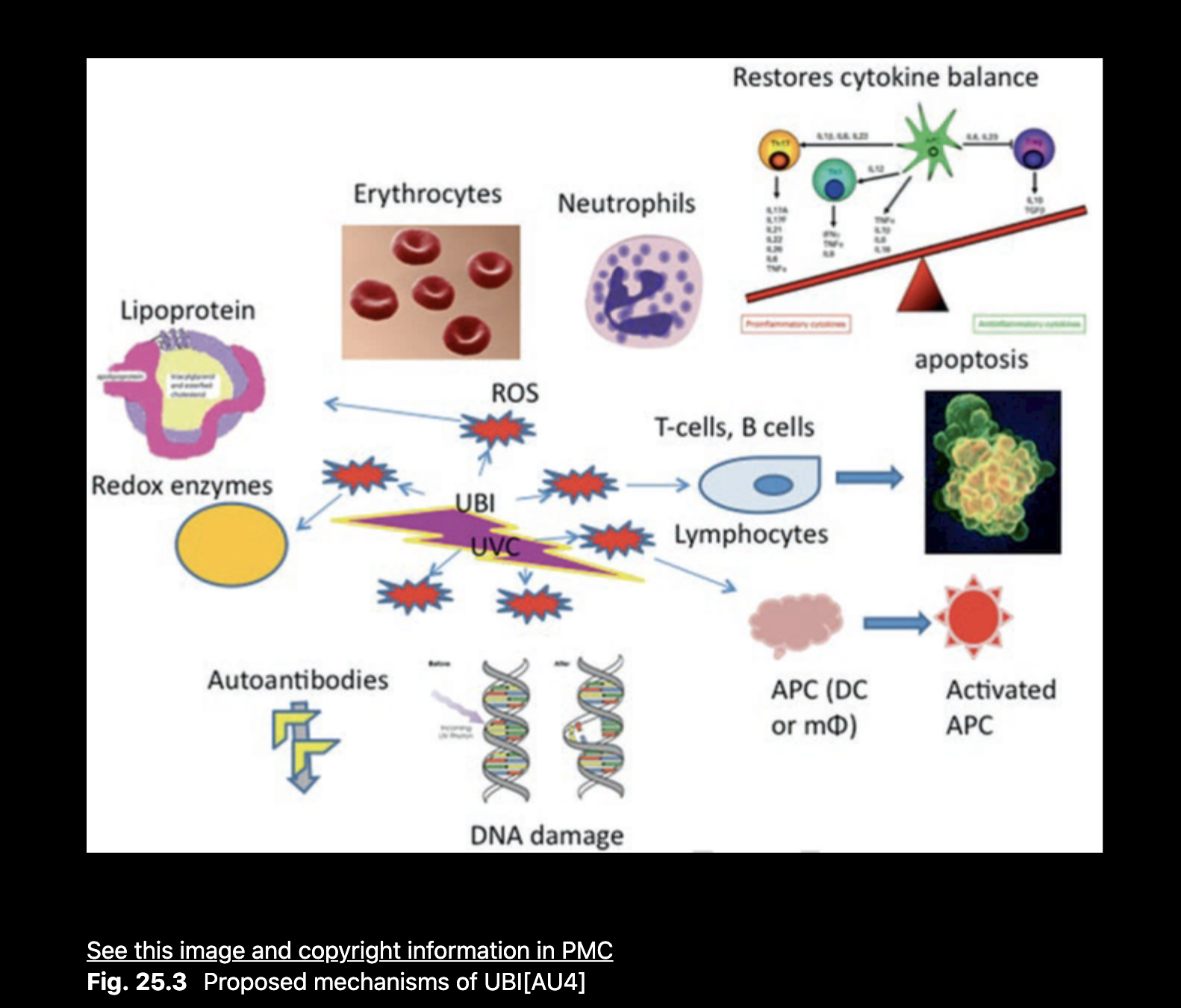OverviewUltraviolet blood irradiation (UBI) was extensively used in the 1940s and 1950s to treat many diseases including septicemia, pneumonia, tuberculosis, arthritis, asthma and even poliomyelitis. The early studies were carried out by several physicians in USA and published in the American Journal of Surgery. However with the development of antibiotics, UBI use declined and it has now been called "the cure that time forgot". Studies mostly performed by Russian workers and in other Eastern countries and the modern view in Western countries is that UBI remains highly controversial.This chapter discusses the potential of UBI as an alternative approach to current methods used to treat infections, as an immune-modulating therapy and as a method for normalizing blood parameters. |

|
Technical Details
No resistance of microorganisms to UV irradiation has been reported, and multi-antibiotic resistant strains are as susceptible as their wild-type counterparts. Low and mild doses of UV kill microorganisms by damaging the DNA, while any DNA damage in host cells can be rapidly repaired by DNA repair enzymes. The oxidative nature of UBI may have mechanisms in common with ozone therapy and other oxygen therapies. There may be some similarities to extracorporeal photopheresis (ECP) using psoralens and UVA irradiation. However there are differences between UBI and ECP in that UBI tends to stimulate the immune system, while ECP tends to be immunosuppressive. With the recent emergence of bacteria that are resistant to all known antibiotics, UBI should be more investigated as an alternative approach to infections, and as an immune-modulating therapy.

|

|